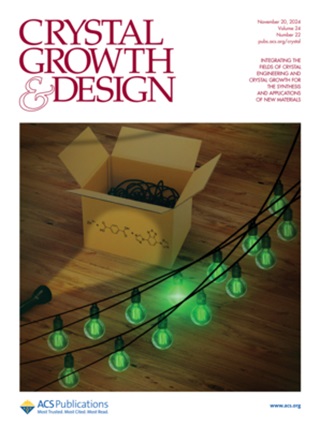Analysis of Solid-State Emission of the p-Bis(2,2-dicyanovinyl)benzene Analogue through Combined X-ray, Synchrotron, and Microcrystal Electron Diffraction
IF 3.4
2区 化学
Q2 CHEMISTRY, MULTIDISCIPLINARY
引用次数: 0
Abstract
Organic solid-state emissive materials have recently gained significant attention for their optoelectronic properties, leading to the design of various optical devices and sensors. Achieving highly efficient solid-state fluorescence is challenging. Moreover, understanding a structure–property relationship is crucial for designing and improvising solid-state emitters. Herein, we have synthesized different compounds having p-bis(2,2-dicyanovinyl)benzene as a core structure and varied the substitution position and linker length. However, after several batches of failed crystallization for a few analogues, microcrystal electron diffraction (MicroED) and synchrotron were used for structure elucidation that helps in better understanding the solid-state emission behavior of the synthesized organic fluorophores. During the analysis, MicroED helps us to characterize a novel polymorph of 4,4′-biphenyldicarboxaldehyde (starting material for BP-1 and BP-2) and an intermediate product of BP-2, i.e., monoaldehyde derivative, from a powdered mixture. Based on the structural analysis, it was observed that π–π interactions and C–H···O/N interactions play a dominant role in tuning the photophysical properties of these organic fluorophores.

通过 X 射线、同步辐射和微晶电子衍射对双(2,2-二氰基乙烯基)苯类似物的固态发射进行分析
最近,有机固态发射材料因其光电特性而备受关注,导致了各种光学设备和传感器的设计。实现高效固态荧光具有挑战性。此外,了解结构与性能之间的关系对于设计和改进固态发射体至关重要。在此,我们合成了以对双(2,2-二氰基乙烯基)苯为核心结构的不同化合物,并改变了取代位置和链接长度。然而,有几种类似物的结晶几经失败后,我们利用微晶体电子衍射(MicroED)和同步加速器进行了结构阐释,这有助于更好地理解合成的有机荧光团的固态发射行为。在分析过程中,MicroED 帮助我们从粉末混合物中鉴定出了 4,4′-联苯二甲醛(BP-1 和 BP-2 的起始材料)和 BP-2 的中间产物(即单醛衍生物)的新型多晶体。根据结构分析,π-π 相互作用和 C-H-O/N 相互作用在调节这些有机荧光团的光物理特性方面起着主导作用。
本文章由计算机程序翻译,如有差异,请以英文原文为准。
求助全文
约1分钟内获得全文
求助全文
来源期刊

Crystal Growth & Design
化学-材料科学:综合
CiteScore
6.30
自引率
10.50%
发文量
650
审稿时长
1.9 months
期刊介绍:
The aim of Crystal Growth & Design is to stimulate crossfertilization of knowledge among scientists and engineers working in the fields of crystal growth, crystal engineering, and the industrial application of crystalline materials.
Crystal Growth & Design publishes theoretical and experimental studies of the physical, chemical, and biological phenomena and processes related to the design, growth, and application of crystalline materials. Synergistic approaches originating from different disciplines and technologies and integrating the fields of crystal growth, crystal engineering, intermolecular interactions, and industrial application are encouraged.
 求助内容:
求助内容: 应助结果提醒方式:
应助结果提醒方式:


